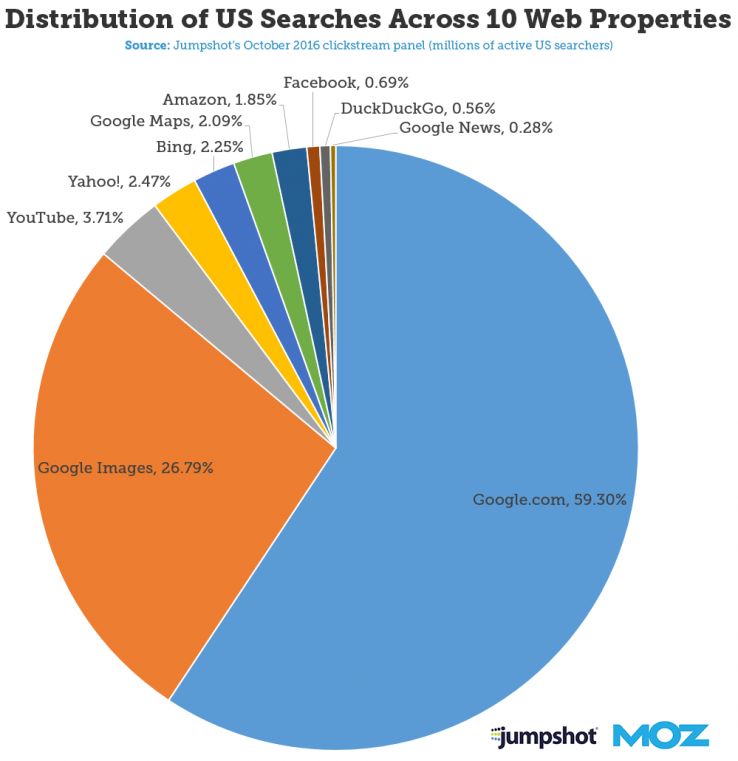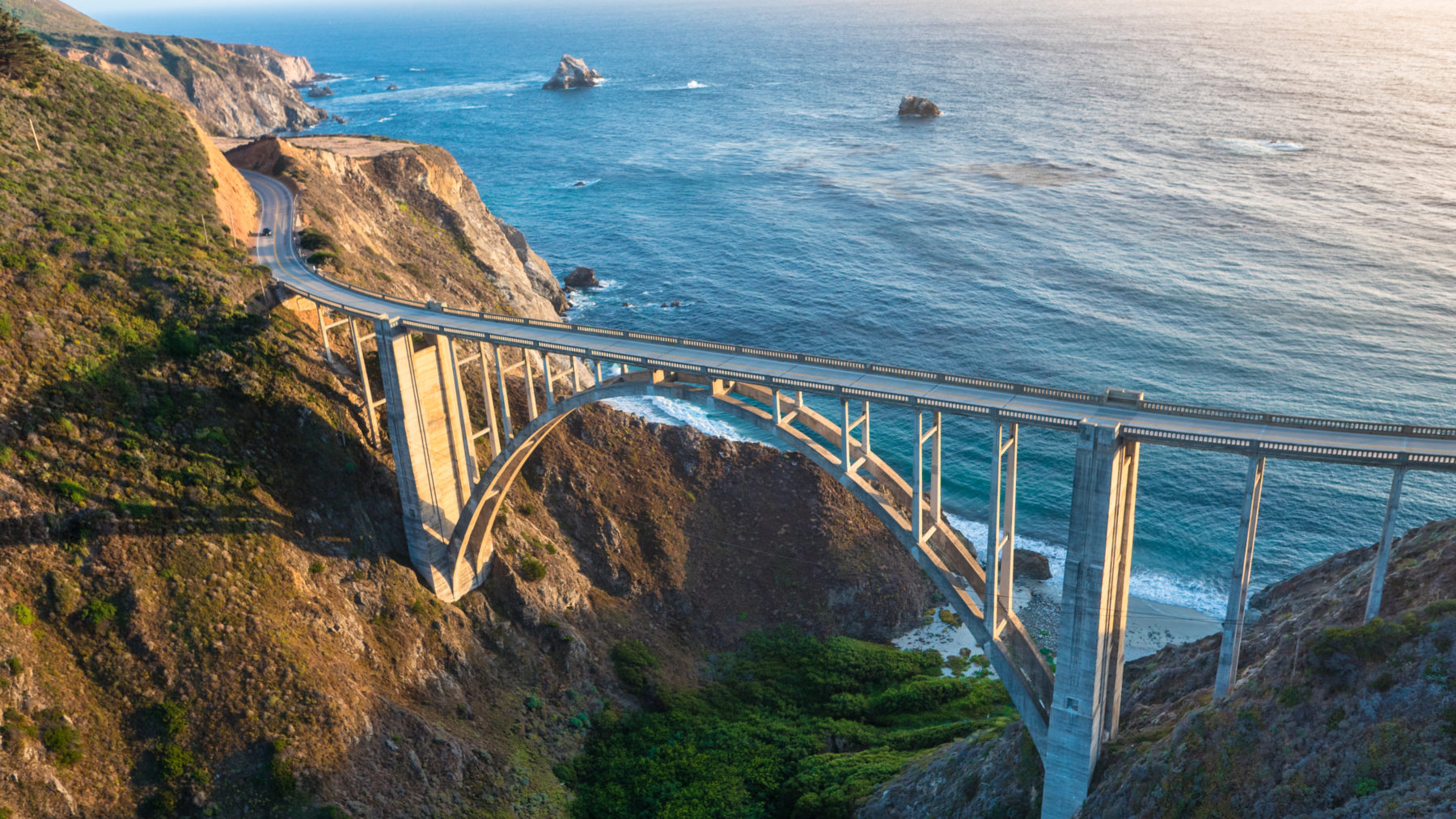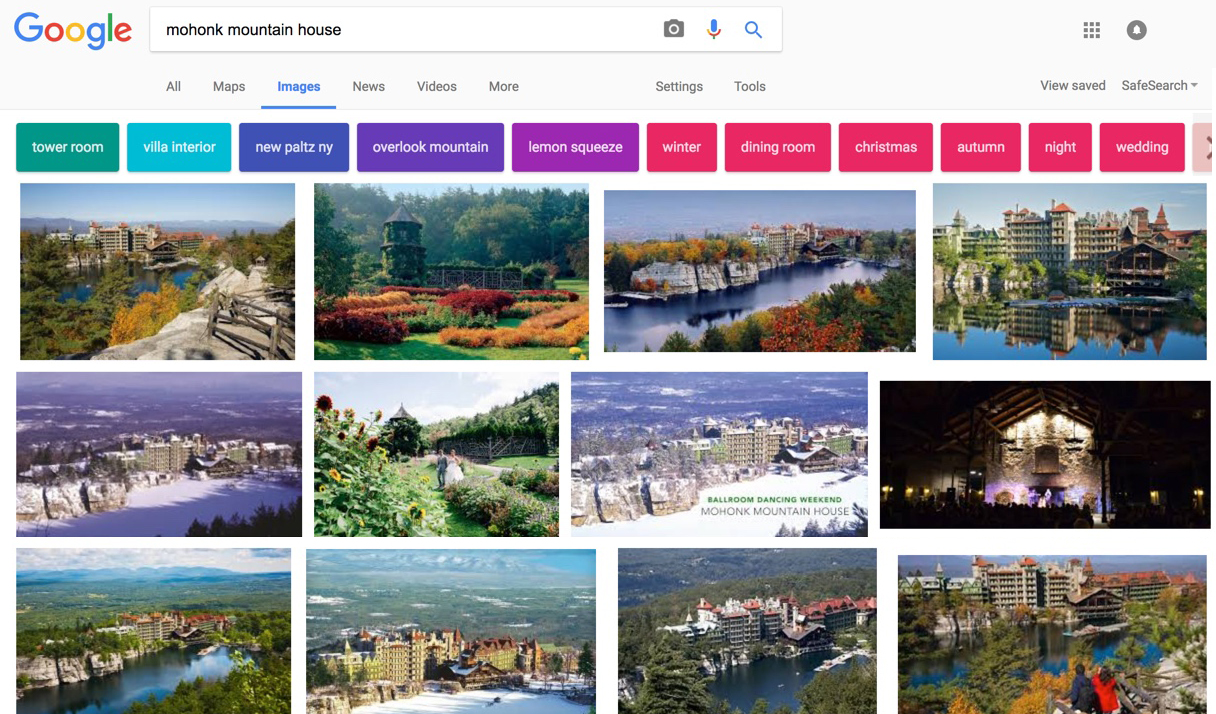
If consumers had a best friend in the search world, it would be Google. Google holds their deepest queries and frequent search history, plus a treasure trove of information a consumer may need to satisfy their every search whim. It shouldn’t come as a surprise, then, that Google continues to dominate the internet search game.Here at Screen Pilot, we are constantly discovering and utilizing new tools that enhance Google search results; think knowledge graphs, featured snippets, and price comparison within the local 3-pack. Each of these features emphasize content relevancy, ensuring that consumers will find the best information without having to scroll too far down the page.Though these innovations secure Google as the top tool for traditional search marketing, it isn’t the only place people look for answers. Moz Co-Founder Rand Fishkin partnered with Jumpshot to discover what percentage of total searches in the US happened across all the major search properties. All the familiar platforms made the cut; but it’s their usage that really caught our eye:
Google.com 59.30%Google Images 26.79%YouTube.com 3.71%Yahoo! 2.47%Bing 2.25%Google Maps 2.09%Amazon.com 1.85%Facebook.com 0.69%DuckDuckGo 0.56%Google News 0.28%

As expected, Google-owned properties are the search platform of choice, accounting for a collective 86.09% of searches. Yet what is surprising is how many of those searches were funneled directly through Google Images.With 26.79% of searches performed on Google Images, the Screen Pilot team believes that ensuring our client’s images appear for relevant searches is a huge opportunity to drive more organic traffic to their websites. Luckily, the travel industry has it easy– people want to be inspired, and often look to images to fuel their wanderlust. Images create an impression of your hotel early in the consumer’s planning process. This impression can tell a story, or trigger an emotional response that will then motivate them to actually reserve that ocean-view suite or slope-side condo. But consumers can’t be spurred into action if the images don’t match the search terms pertaining to your hotel or resort.This is why we make our client’s images easier to find.
Boost Your Image Footprint
Before uploading images to your website or profiles across the web, here are some key details to consider in order to leave a trail of breadcrumbs that can drive more web traffic to your site.
Image File Name & Alt Tags
No one searches for “D012527306.jpg.” But they do search for “San Francisco hotels” or “Italian restaurants in Boston.” Your naming strategy should mimic what people search so your images show up in relevant search results pages. Start by giving each of your images a searchable name that’s descriptive, but avoids keyword stuffing. An example of a good file name would be: Smiths-Seafood-Restaurant-Downtown-Boston.jpg or Duck-Boat-Tour-Boston.jpgAnother detail to pay attention to is your images’ alt tag descriptions, which is a snippet of text that describes what is included in the image. Alt tags are filled out during the upload of the image to your website. These descriptions allow bots to crawl the site and “read” the file and make your site accessible to the visually impaired. For example, an ADA screen reader can read aloud to the searcher an alt tag of “Sunset drive over a bridge along California’s coastal highway” to help the user understand what’s contained within the visual. When writing your alt tags, follow the same steps you would in designating image file names: be descriptive, but not overly so. Keyword overflow won’t help you here.

< img alt= “Sunset drive over a bridge along California’s coastal highway. ” >
Give People a Reason to Click
Separate yourself from the competition by adding a descriptive overlay on an image. You could re-use the alt tag, or have a short call-to-action. Use this feature to include content that is engaging and sharable. We also tend to avoid any typical sales language, such as “Book Now” or “Stay More and Save on Your Stay” since there is a fine line between piquing their interest and a hard sales push.

Ballroom Dancing Weekend? You have my attention.
Think Beyond Property Images
In order for your images, and by association your website, to rank for search terms like “Things to Do in San Antonio,” you’ll have to think bigger than photos of your grounds or guest rooms. Consider creating an infographic with a list of 5-10 top “must-see” places, and add that to your blog. You’ll now have great content that can do the double-duty of assisting current guests in making the most of your destination, and attracting potential guests who may have just started considering your destination–and you can bet your brand is one they’ll now remember.
Did you enjoy the read?
Get original hospitality industry insights delivered to your inbox. Sign up to receive Screen Pilot’s #TrendingNow Newsletter.






